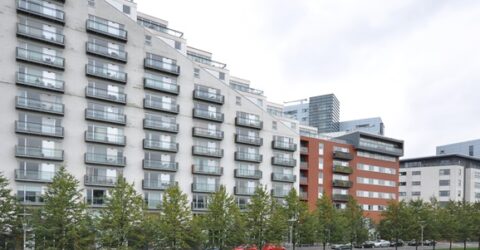What can I do if my street has slow broadband?
Slow broadband affects entire communities, so what can you do if you live on a street with inadequate connections?

In many respects, Orkney Street in Antrim and the B4570 in Ceredigion are as far apart as you can get.
The former is a cul-de-sac of post-war houses just off Northern Ireland’s M2 motorway, while the latter is a winding Welsh lane liberally sprinkled with older detached houses.
Yet despite their many aesthetic differences, these roads have one thing in common – they have the slowest broadband speeds in their respective Home Nations.
These are among the findings drawn from over 200,000 speed tests, published in December and providing an insight into which UK locations still endure slow broadband.
These might be the slowest streets, but there are plenty of other addresses worth noting – Ashtree Hill in Craigavon and Chamberlain Row in the Vale of Glamorgan, to name but two.
If you’re unfortunate enough to live on one of these roads – or any other street in the UK with slow broadband – what can you do to tackle the issue?
Slow news day
These streets received extensive press coverage last month, since average download speeds were as low as 2.28Mbps.
(To add some context, America’s Federal Communications Commission believes internet connections slower than 25Mbps shouldn’t be described as broadband.)
As we reported back in 2022, there are minimum connection speeds for most online activities and the streets above wouldn’t even have enough connectivity to support standard definition Netflix streaming.
Fortunately, other connectivity options are available…
Three solutions to slow broadband
1. Mobile broadband.
Many third-world countries skipped the fibre broadband stage entirely, moving directly from sluggish dial-up/DSL connections to high-speed wireless internet coverage.
That might be an option in some UK households as well, especially those on the edges of urban areas where mobile network signals tend to be strongest.
As we’ve previously discussed, there are subtle differences between mobile dongles and MiFi hubs, but both convey 4G/5G data to one or more web-enabled devices.
A dongle powers a single device (which might be fine if you only really need a strong connection for your works laptop), whereas a MiFi hub acts as a miniature broadband router.
2. Satellite broadband.
Satellite broadband has been on the fringes of the internet connectivity debate for a long time, but falling costs and improving service might be propelling it towards the mainstream.
Because low earth orbit satellites hang above the Earth, they’re impervious to the hills which restrict mobile signals, and unaffected by a property’s distance from masts or local exchanges.
Satellite broadband also offers whole-home coverage through conventional wireless routers, though you’ll need to install an external dish with uninterrupted southerly aspects.
There are other drawbacks to satellite broadband, not least latency and the risk of adverse weather leading to unreliable connections.
3. Community broadband.
Residents could club together to try to establish a Fibre Community Partnership, where full fibre broadband is installed using a combination of community and voucher-funded payment.
Carried out in conjunction with Openreach, this enables newly cabled residents to choose their preferred ISP once a customised installation has taken place outside their homes.
However, this relies on considerable sums of money being raised – and also a degree of neighbourly cooperation which isn’t always achievable in practice.
It’s worth noting that Openreach and other full fibre companies are working at pace to cable many parts of the UK with slow broadband speeds, reducing the need for future community partnerships.






